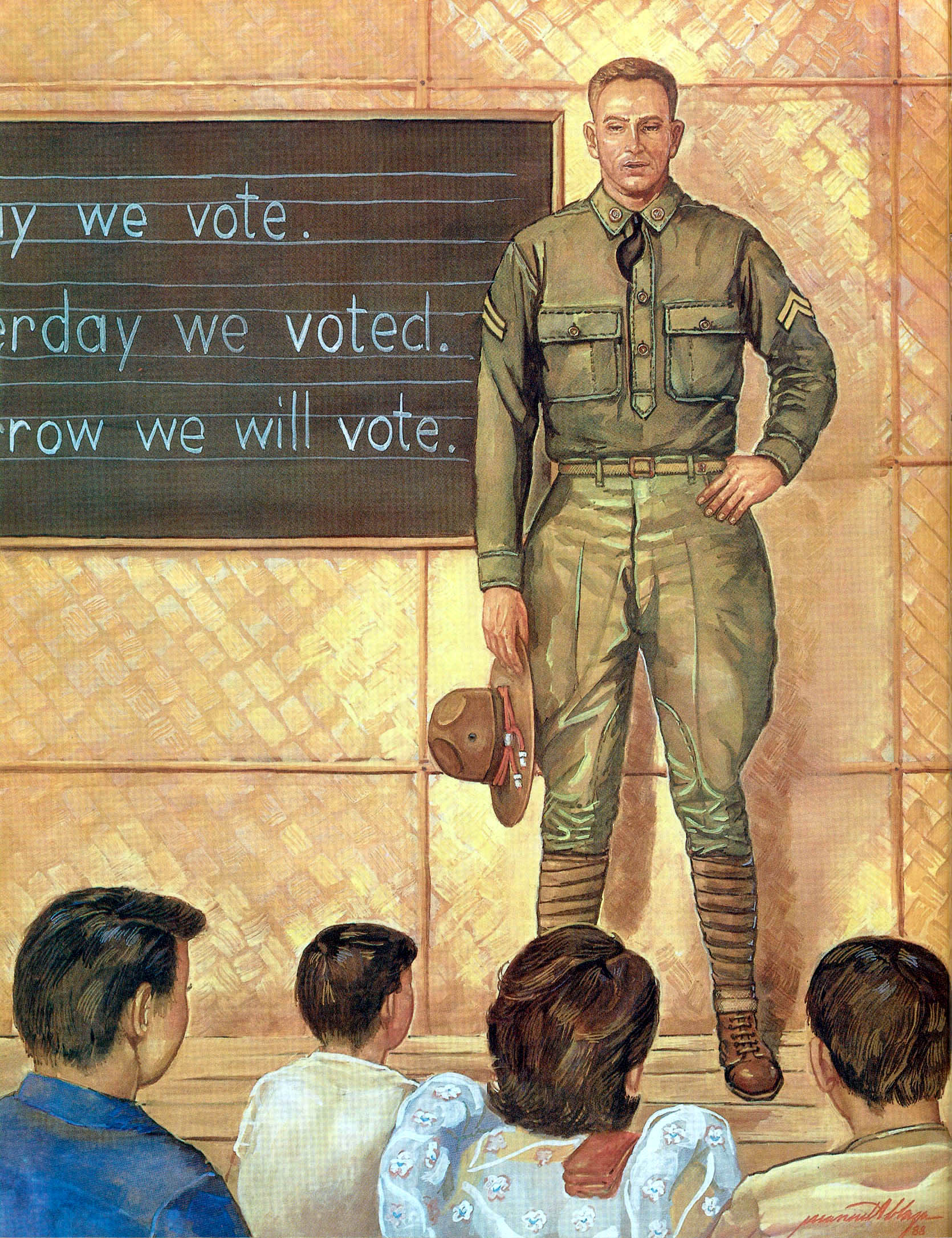
A Hidden Resource
Philippines, 1920s
A Hidden Resource NCOs assumed a major role in the civic action programs begun when the Army took over the defense of the Philippines. Always recognized for their skills as trainers, NCOs have frequently found themselves with the additional duty of teaching in local schools, promoting literacy, and working toward the elimination of disease. In the 1920s, the Army began working with the Filipinos to prepare for independence. Here the corporal assumes a new task, that of teaching citizenship skills to Filipino civilians.
Budget constraints and large stocks left over from World War I delayed official changes in uniforms during the interwar period. Soldiers with pride in their appearance quickly turned to private purchases of tailored garments as a "local option, " producing considerable variation in colors. These unofficial changes often anticipated official changes in Army uniforms. They most often occurred in overseas garrisons such as in the Philippines.
In 1920 a new simplified chevron system with olive drab stripes on a dark blue background came into being, reflecting a reduction in the number of grades to seven. Shiny brass collar insignia soon replaced the duller bronze. Black silk ties appeared, along with the Army custom of tucking them into the shirt. Every soldier in the tropics was allowed to wear an improved service or "campaign" hat, with characteristic "Montana peak" indentation. It was often the soldier's most prized possession, with its brim sometimes stiffened with sugar water. The corporal shown here, a squad leader, indicates his membership in the Signal Corps not only by collar insignia, but by the use of the orange and white (branch colors) cord around the base of his hat, a Stetson costing nearly a month's pay.